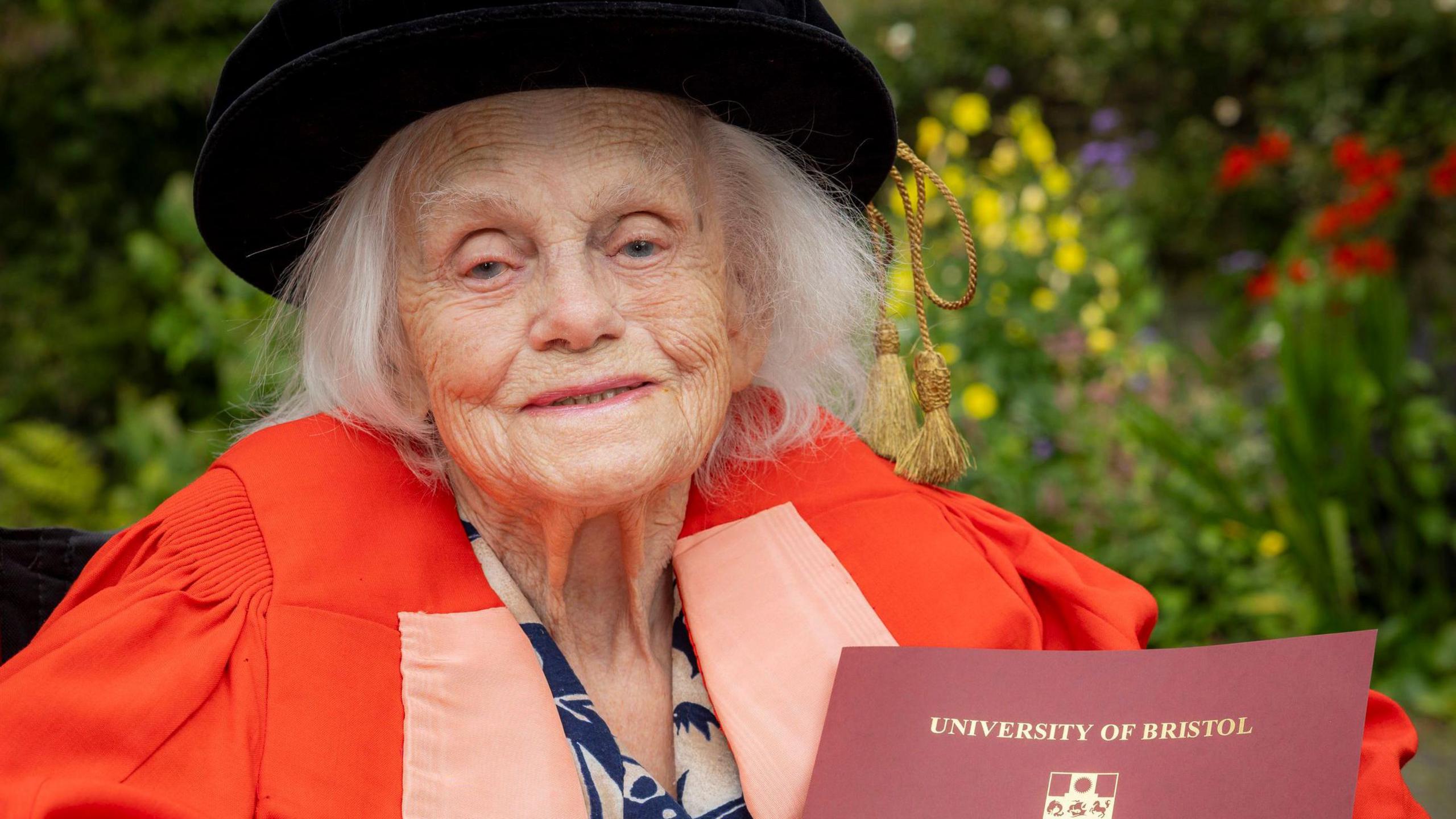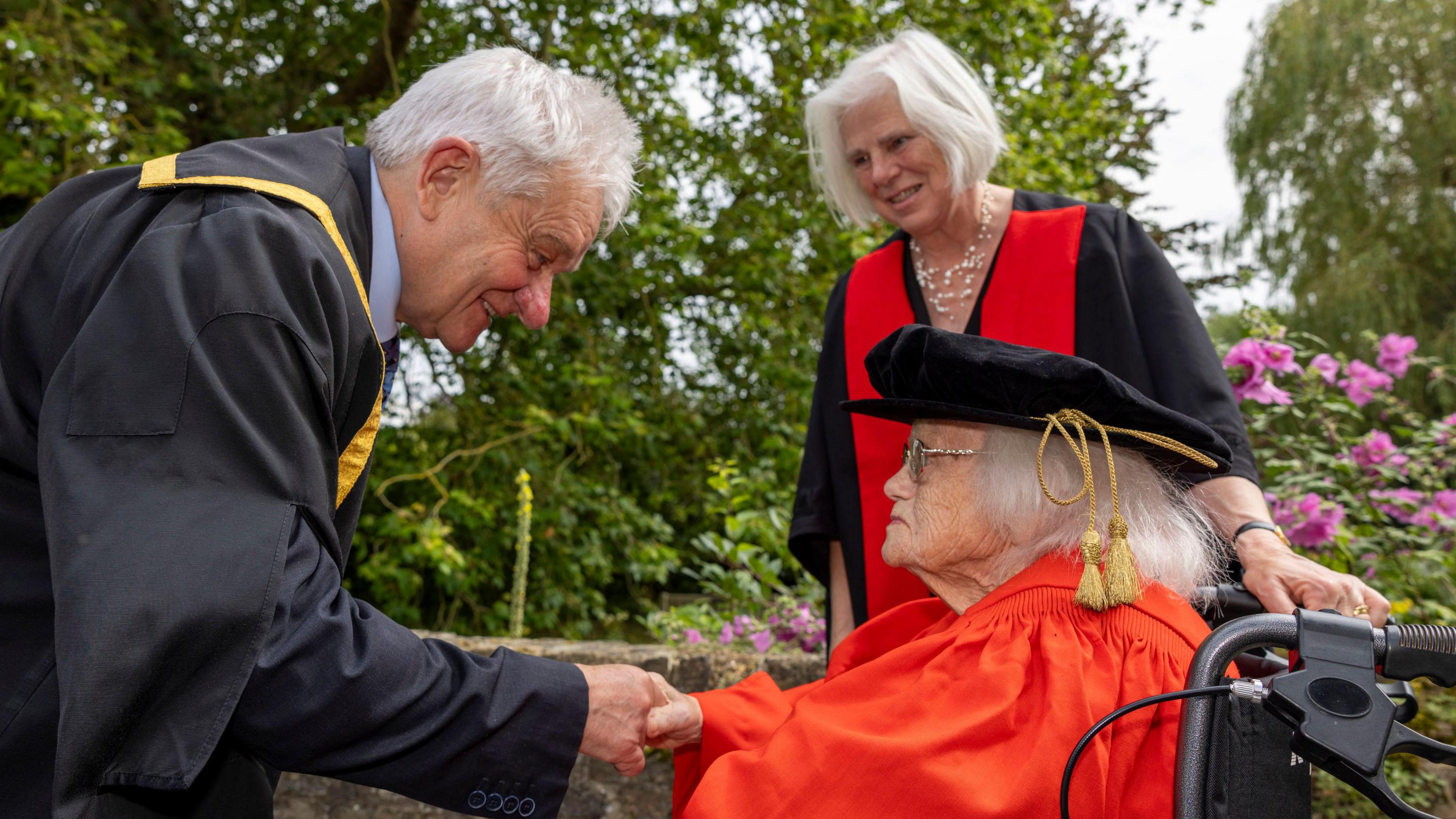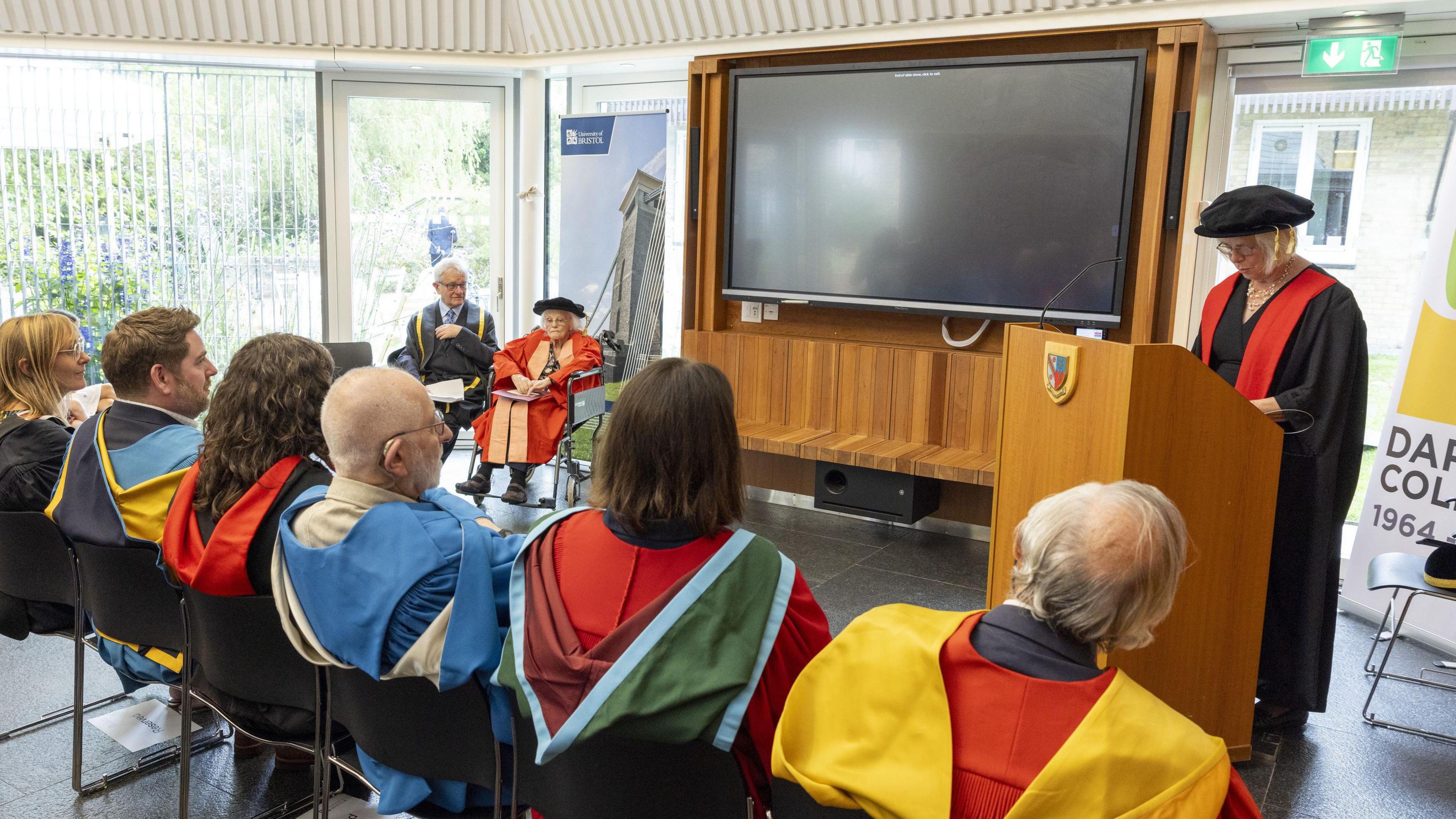Physicist, 98, honoured 75 years after discovery

Rosemary Fowler has received an honorary doctorate from the University of Bristol
- Published
A 98-year-old pioneering physicist who gave up her PhD 75 years ago to have a family has received an honorary doctorate from her old university.
In 1948, Rosemary Fowler's findings at the University of Bristol paved the way for critical discoveries that would rewrite the laws of physics.
Her discovery of the Kaon particle helped lead to a revolution in the theory of particle physics. But in a post-war Britain, she decided to leave academia when she married fellow physicist Peter Fowler in 1949 and went on to have three children.
Dr Fowler said she felt "very honoured", but added: "I haven't done anything since to deserve special respect."

Dr Fowler's discovery of the Kaon particle helped lead to a revolution in the theory of particle physics
Dr Fowler received the doctorate in a private graduation ceremony close to her Cambridge home.
Nobel prize-winning University of Bristol Chancellor Sir Paul Nurse conferred an honorary Doctor of Science on her.
Dr Fowler's discovery of the Kaon particle helped to predict particles such as the Higgs boson, discovered at Cern in Geneva, Switzerland.
Sir Paul praised Dr Fowler's "intellectual rigour and curiosity", adding that she "paved the way for critical discoveries that continue to shape the work of today's physicists, and our understanding of the universe".

Dr Fowler was conferred with an honorary doctorate at a private graduation ceremony
Dr Fowler was born in Suffolk in 1926, and grew up in Malta, Portsmouth and Bath as her family travelled for her father’s job as a Royal Navy engineer.
In 1948, Bristol's cosmic ray physics team, led by Professor Cecil Powell, were hunting for new fundamental particles.
They had already found the pion for which Prof Powell would be awarded the Nobel Prize in 1950.
Then just 22, Rosemary Fowler (nee Brown) spotted something when viewing unusual particle tracks - a particle that decayed into three pions (a type of subatomic particle).
She said: "I knew at once that it was new and would be very important.
"We were seeing things that hadn't been seen before - that's what research in particle physics was. It was very exciting."
The track she was looking at, later labelled k, was evidence of an unknown particle, now known as the kaon or K meson.
The k track was the mirror image of a particle seen before by colleagues in Manchester, but the Manchester team's track decayed into two pions, not three.
Trying to understand how these mirror images were the same, yet behaved differently, helped lead to a revolution in the theory of particle physics.
The year after the discovery, Dr Fowler left university having published her discovery in three academic papers.
Follow BBC Bristol on Facebook, external, X, external and Instagram, external. Send your story ideas to us on email or via WhatsApp on 0800 313 4630.
Related topics
- Published23 April 2024

- Published4 July 2012

- Published4 July 2012
- Published4 July 2012